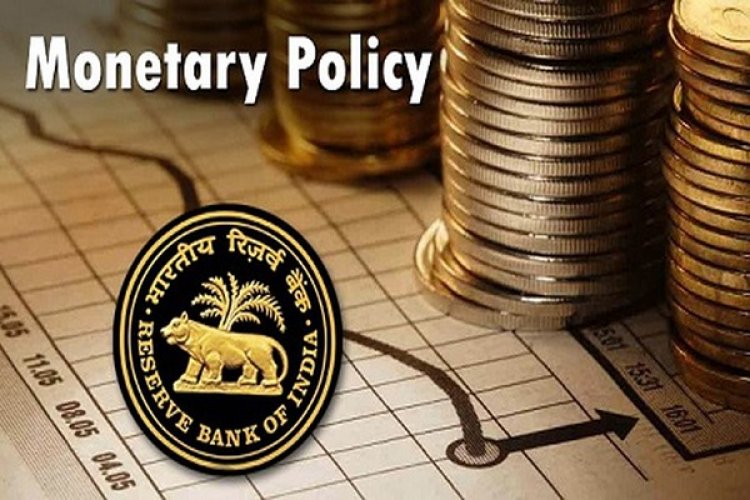Monetary Policy Review
STORIES, ANALYSES, EXPERT VIEWS

As expected, the Reserve Bank of India (RBI) six-member Monetary Policy Committee (MPC) Wednesday maintained status quo on key rates in its bi-monthly policy statement for the ninth consecutive time.
Status quo on key rates: The repo rate, at which the RBI lends short-term funds to banks, has been kept unchanged at 4% whereas the reverse repo rate, at which the RBI borrows from banks, remains the same at 3.35%. The Marginal Standing Facility (MSF) & Bank Rate also remain unchanged at 4.25%.
Majority of economists expected RBI’s MPC to keep the key lending rates unchanged in the backdrop of global scare due to the new covid variant Omicron.
Since March 2020, RBI has slashed the repo rate by a total of 115 basis points (bps) to soften the blow from the coronavirus pandemic, followed by a 135 bps worth of rate cuts since the beginning of 2019.
Recovery may not be “self-sustaining” or “durable”: Despite the economy growing 20.1% in the first quarter of 2021-22, and 8.4% in the second, the RBI, which retained its 9.5% GDP growth estimate for 2021-22, said that the recovery may not be “self-sustaining” or “durable”. And in pursuit of a “durable, strong, and inclusive” recovery, it decided to retain its accommodative stance. RBI expects inflation to be 5.3% in 2021-22 and come down to 4-4.33% by the end of 2022-23.
Key highlights:
- Inflation: Headline inflation would peak in the fourth quarter of the current fiscal. Presently, RBI retains CPI inflation projection at 5.3% in 2021-22
- "The persistence of CPI inflation excluding food & fuel since June 2020 is an area of policy concern in view of input cost pressures that could rapidly be transmitted to retail inflation as demand strengthens”, says RBI Governor Das.
- Cut in excise duty on petrol, diesel to bring down inflation rate on durable basis, said Governor
- Crude oil prices softening in November would alleviate domestic cost push build up: RBI Governor Das
- Growth: Price stability remains cardinal principle of RBI as it fosters growth, stability
- Govt consumption picking up from August, providing support to aggregate demand
- Real GDP growth is projected at 17.2% for Q1 and at 7.8% for Q2 of 2022-23
- RBI retains the gross domestic product (GDP) growth target at 9.5% in FY22
- Liquidity: RBI to allow banks to make one-time pre-payment with respect to TLTRO. From January 2022, liquidity absorption will mainly be managed through the auction route
- RBI would continue to manage liquidity in a manner to maintain financial stability
Private consumption and investment remain low
The Hindustan Times speculates on the following factors: Is the MPC right in its view that the current level of inflation is transient? Is its evaluation of the current recovery nor being sustainable without help accurate? And is RBI over-relying on the ability of the non-interest rate actions at its disposal (such as variable reverse repo rate auctions) to tighten the money supply? There are no clear answers to any of these yet.
“But the central bank is correct when it says that private consumption and investment — both key ingredients of growth — are still below pre-pandemic levels. The first (private consumption) is key to growing aggregate demand, the lack of which was a problem ailing the economy even before the pandemic struck. It is largely government spending that has helped the economic recovery. That, and the possibility of the Omicron variant causing at least a stutter in the economic recovery — perhaps more if it turns out that the variant has the ability to evade vaccines — may have prompted it to prioritise growth over liquidity normalisation. That may well be the correct approach at this point in time.”
Managing surplus liquidity
The major expectation, writes Sugata Bhattacharya (executive vice-president and chief economist, Axis Bank) “had been a move towards policy ‘normalisation’, and there indeed seems to be a subtle shift in policy guidance towards this objective. While the need for durable growth remains paramount, the statement suggests a somewhat greater emphasis on both anchoring inflation and addressing potential financial stability risks arising from policy tightening of global central banks.
“Since the onset of the Covid-related lockdowns, RBI had moved proactively to cut the repo and reverse repo rate and inject unprecedented amounts of funds into banks and other intermediaries. The excess liquidity in the financial system had increased from average surplus levels of around Rs 2-3 lakh crores daily in March ‘20 to around Rs 6-8 lakh crores. This had served to push short-term market interest rates down to the reverse repo rate, and occasionally much below…..
“Liquidity management in the extended banking and financial system (which includes non-banking intermediaries like NBFCs, mutual funds and others) will now be the key pillar of normalisation. This will involve calibrating both the volumes of the surplus funds in the system, as well as the associated price of this liquidity (i.e., interest rates)….”
















